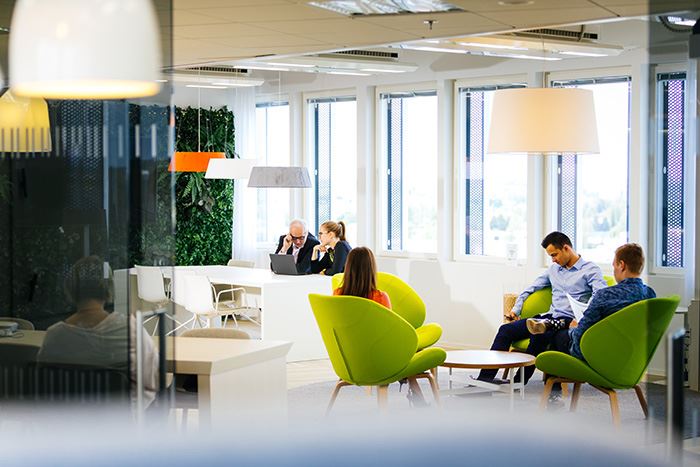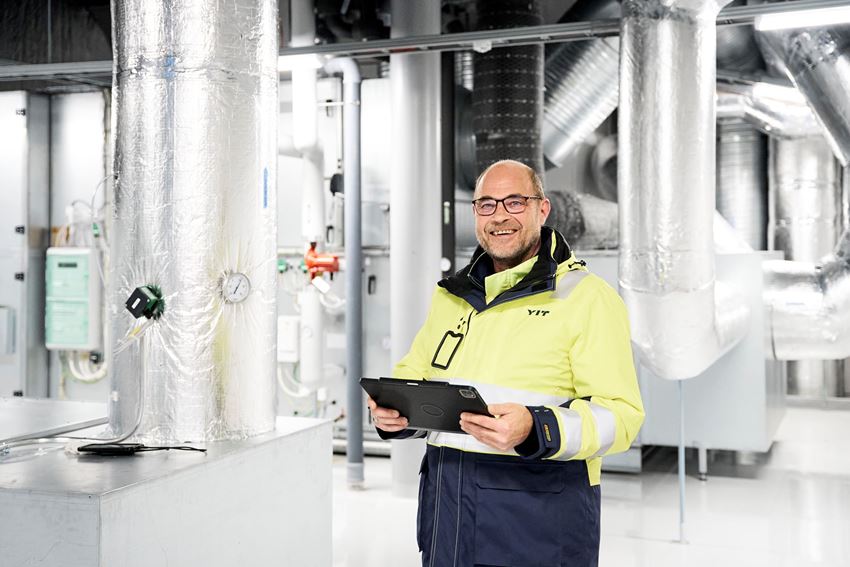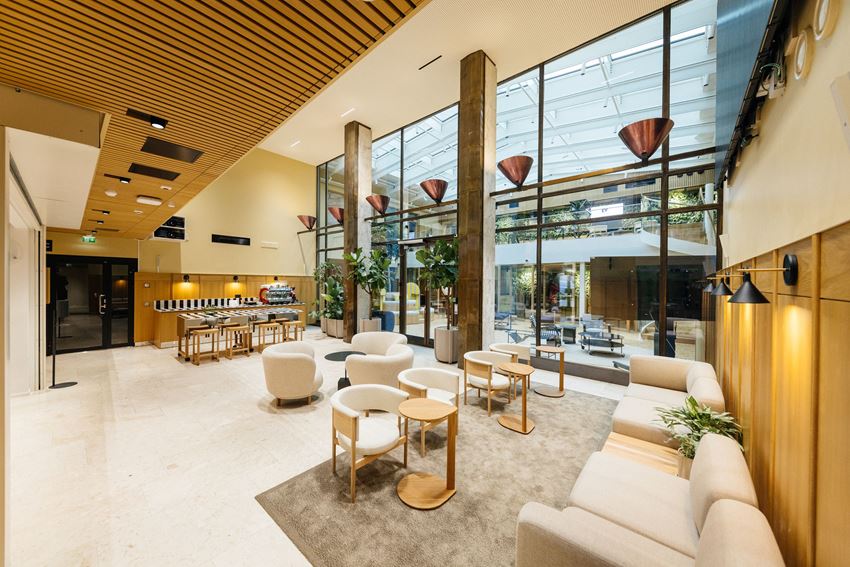Sustainable data centers as a service
- Work
- Premises
- Offices
- Future of Work
- 2/23/2020
Fight, flight or flow? Our Neolithic brains appreciate working spaces tailored to our needs
Many companies already know that they need to pay attention to physical ergonomics, but perfecting brain ergonomics is still very much in the works. Tailor-made workspaces help keep our capital assets in prime condition and exhaustion at bay. An organisation can make the most of new premises if it is also prepared to fine-tune its working practices and culture.

The concerns of a Stone Age human were very different from those of a modern-day office worker. A contemporary specialist does not normally need to worry about getting eaten by a predator! On the other hand, the hunter-gatherers did not have to stress about constant interruptions, noise or a deluge of messages.
Nevertheless, office workers and hunter-gatherers have a lot in common – namely, their brains are similar.
“The human brain does not evolve at the same pace with our environment, culture or technology. It is optimised for conditions dating back 10,000 years. An office environment may create a multitude of challenges for our hunter-gatherer’s brains,” explains brain researcher, professor of pedagogy Minna Huotilainen, who was lecturing on the subject at YIT’s Sustainable Urban Environments event.
The office environment may be ripe with surprises and urgent messages. As a rule, the hunter-gatherers only encountered them in the savannah amongst predators and prey animals. The avalanche of signals creates coping and health issues for the contemporary person – and if the employee is chronically attached to their mobile device, they will take the problem home with them.
“If our surroundings send constant messages of interruptions, noise and rush, our system adjusts itself to a permanent fight-or-flight mode. The permanent state of readiness will gradually affect our physical and mental health: our blood pressure will rise and our sleep quality will suffer, as will our memory and attention. Our mental state will deteriorate towards quick solutions, coping with our work tasks and indifference.”
Optimise the space according to your tasks
So, what to do? We contemporary humans cannot change our brains. What we can improve, however, is our working environment. According to professor Huotilainen, a workplace should include a space where employees are able to concentrate in peace.
“Get rid of unnecessary clutter that creates interruptions. It helps you to leave the fight-or-flight mode and move to a flow mode, characterised by enthusiasm, a sense of control, learning, new ideas as well as meaningful experiences. We also need places where we can recover. In other words, we need different spaces for different things,” emphasises Huotilainen.
Tuula Klemetti, Director, YIT concurs. She has studied the development of more functional working environments and has witnessed many different office trends during her 30-year career.
“The current space design is focused on functionality, networking, silent information sharing, learning from others and, of course, well-being at work. However, networking and information-sharing do not mean the same thing as open-plan offices becoming more common. There are many alternatives available to us instead of the either/or choice between individual rooms and a scenic office. Each working environment should be designed according to the company’s working culture and needs,” says Klemetti.
Many long-term office users have struggled with the idea of giving up their personal room. When YIT and Prior Konsultointi’s Sustainable Urban Environments barometer asked what kind of workspace the respondents would prefer to work in, a personal office was in the top three of responses. 42% of Finns wanted one. A lowly 16% thought it essential for the premises to include meeting spaces where you could meet with other people from different organisations.
According to Klemetti, the backdrop of this opinion may be both first- and second-hand experiences of an open-plan office environment.
“Many companies have approached a working environment reorganisation from the wrong starting point. The change is aimed at a new, trendy office and savings in office costs – without necessarily stopping to think how the employees will work and the type of work they will do on the premises. This may result in discontent and criticism, because the end result may often be a modern yet impractical open-plan office where no one feels quite comfortable.”
New workspace, new working culture
Klemetti underlines that a new office also means a change in the working culture. If people have not been instructed and familiarised with it, they may attempt to work in the same way in a multi-purpose office as they did in the old office. That is why it is always necessary to consider the operations as a whole when making changes to the office. This offers a good opportunity to update the operating processes and instruct the supervisors to act in accordance with the new working culture, for example, by providing their subordinates with more flexibility to plan their working days according to their needs and to make them smoother.
“In addition to the property unit, a change in the working culture also requires the contributions of HR, IT, communications as well as the management. In order to make the most of the new working environment, the employees should be encouraged, already at the planning stage, to think ahead about their working days as well as ways to improve their working methods. A versatile workspace enables people to pace their working days by using many different workstations. At the same time, it enables them to take more responsibility for planning their working day and choosing a suitable workspace accordingly.”
This also benefits the mind. Taking control of your own working day – by planning and prioritising its progress – enables you to also reach the flow state more easily.
In Klemetti’s opinion, many companies already know to pay attention to physical ergonomics, but perfecting brain ergonomics is still very much in the works. Now, we are designing socially smart offices.
“A smart workspace lives and adapts to the working requirements. A successful multi-space office is like a well-equipped health club for the mind. When a suitable environment can be found for each form of knowledge work, where the employees are able to focus on the task at hand, the mind works efficiently like a fine-tuned body.”



